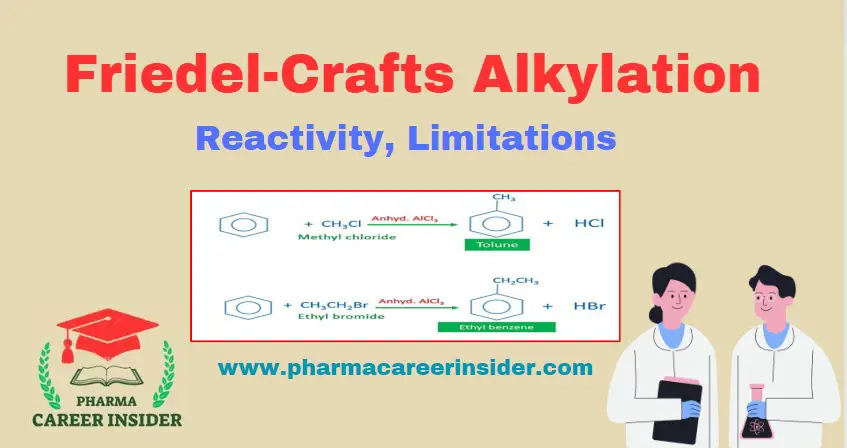Emulsifying agents, also known as emulsifiers, play a crucial role in various industries, including pharmaceuticals, food, cosmetics, and more. These agents help in stabilizing emulsions, ensuring the uniform mixing of immiscible liquids like oil and water. Without emulsifying agents, emulsions would quickly separate, leading to product instability.
In this article, we will explore the definition, types, mechanism of action, and applications of emulsifying agents in different industries.
What is an Emulsifying Agent?
An emulsifying agent is a substance that helps in the stabilization of an emulsion by reducing the surface tension between two immiscible liquids. These agents contain both hydrophilic (water-attracting) and lipophilic (oil-attracting) components, allowing them to interact with both phases and form a stable mixture.
Types of Emulsifying Agents
Emulsifying agents can be classified based on their origin and chemical composition:
1. Natural Emulsifiers
- Derived from natural sources like plants and animals.
- Examples: Lecithin (found in egg yolk and soybeans), Gum Arabic, Pectin, and Agar
2. Synthetic Emulsifiers
- Chemical synthesized substances that stabilize emulsions.
- Examples: Sodium lauryl sulfate, Polysorbates (e.g., Polysorbate 80), and Cetyl alcohol
3. Amphiphilic Emulsifiers
- contain both hydrophilic and lipophilic parts.
- Examples: Tween series (e.g., Tween 20, Tween 80), Span series (e.g., Span 20, Span 80)
4. Finely Divided Solids
- Solid particles that stabilize emulsions by forming a barrier at the interface.
- Examples: Bentonite clay, Magnesium hydroxide, and Aluminum hydroxide
Mechanism of Action of Emulsifying Agents
The mechanism by which emulsifying agents stabilize emulsions involves the following steps:
- Reduction of Interfacial Tension: Emulsifiers reduce the tension between two immiscible liquids, allowing them to mix more easily.
- Formation of Protective Barrier: The amphiphilic nature of emulsifiers enables them to form a protective layer around dispersed droplets, preventing coalescence.
- Electrostatic Repulsion: Some emulsifiers impart a charge to dispersed droplets, creating electrostatic repulsion that prevents them from merging.
- Viscosity Modification: Certain emulsifying agents increase the viscosity of the emulsion, further stabilizing the system.
Natural vs. Synthetic Emulsifiers: Pros & Cons
Emulsifiers can be broadly categorized into natural and synthetic emulsifiers, each with distinct advantages and limitations. Understanding their differences is crucial for selecting the right emulsifier for pharmaceutical, cosmetic, and food applications.
1. Natural Emulsifiers
These emulsifiers are derived from plant or animal sources and are generally preferred in clean-label and organic formulations.
Pros of Natural Emulsifiers:
- Safe & Biodegradable: Minimal side effects, eco-friendly, and sustainable.
- Non-Toxic: Ideal for food and pharmaceutical applications.
- Regulatory Approval: Easily accepted in organic and natural product formulations.
- Mild & Skin-Friendly: Suitable for sensitive skin formulations in cosmetics.
Cons of Natural Emulsifiers:
- Less Stability: Can break down over time, leading to phase separation.
- Limited Functionality: May not be as effective in complex formulations.
- Higher Cost: Natural sourcing and processing make them more expensive.
Examples of Natural Emulsifiers:
- Lecithin (Soy, Egg Yolk): Common in food and pharmaceuticals.
- Gum Arabic: Used in beverages and syrups.
- Agar & Pectin: Found in jams and confectionery.
2. Synthetic Emulsifiers
Synthetic emulsifiers are chemically produced and designed to offer superior emulsification properties.
Pros of Synthetic Emulsifiers:
- Highly Stable: provides long-lasting emulsions.
- Versatile: It can be used in a wide range of applications.
- Cost-Effective: More affordable due to large-scale production.
Cons of Synthetic Emulsifiers:
- Potential Allergies & Sensitivities: May irritate some users.
- Environmental Concerns: Some synthetic emulsifiers are non-biodegradable.
- Regulatory Restrictions: Some emulsifiers are banned or restricted in certain regions.
Examples of Synthetic Emulsifiers:
- Polysorbates (Tween 20, Tween 80): Used in cosmetics and pharmaceuticals.
- Sodium Lauryl Sulfate (SLS): Common in detergents and personal care products.
- Mono- and Diglycerides: Used in processed foods like margarine and ice cream.
How to Choose the Right Emulsifying Agent?
Selecting the appropriate emulsifying agent depends on multiple factors, including the application, stability, and regulatory requirements.
1. Identify the Type of Emulsion
- Oil-in-Water (O/W) Emulsions: Water is the continuous phase, oil is dispersed (e.g., lotions, milk, and creams).
- Water-in-Oil (W/O) Emulsions: Oil is the continuous phase, water is dispersed (e.g., ointments, butter).
2. Consider the Hydrophilic-Lipophilic Balance (HLB) Value
- Low HLB (3-6): Best for W/O emulsions (e.g., Span series).
- High HLB (8-18): Best for O/W emulsions (e.g., Tween series).
3. Check Compatibility with Other Ingredients
- Some emulsifiers may react with active ingredients, affecting stability.
- Ensure the emulsifier does not degrade or cause unwanted chemical interactions.
4. Assess Stability & Shelf Life
- Choose emulsifiers that prevent creaming, coalescence, and phase separation over time.
- Synthetic emulsifiers generally offer better long-term stability.
5. Regulatory & Safety Considerations
- Verify compliance with FDA, EFSA, and WHO guidelines for food and pharmaceutical applications.
- Natural emulsifiers are often preferred for clean-label and organic certifications.
6. Cost & Availability
- Synthetic emulsifiers are usually cheaper and more readily available.
- Natural emulsifiers can be expensive but align with the growing demand for sustainable products.
Latest Research and Innovations in Emulsifiers
Emulsifiers are constantly evolving with advancements in food science, pharmaceuticals, and cosmetics. Here are some of the latest developments:
1. Plant-Based & Biodegradable Emulsifiers
- Algal Emulsifiers: Derived from marine algae, offering eco-friendly alternatives.
- Protein-Based Emulsifiers: Casein and pea protein emulsifiers improve stability in food applications.
2. Nanoemulsions for Drug Delivery
- Nanoemulsions improve the bioavailability and solubility of poorly water-soluble drugs.
- Used in advanced cancer treatments, lipid-based vaccines, and nutraceuticals.
3. AI-Driven Formulation Optimization
- Machine learning is being used to predict emulsifier efficiency.
- Helps in developing customized emulsifier blends for specific applications.
4. Clean-Label & Natural Emulsifiers
- Demand for clean-label emulsifiers has led to innovations in lecithin, plant saponins, and gum-based emulsifiers.
- New extraction techniques improve functionality while maintaining a natural status.
5. Enzyme-Modified Emulsifiers
- Enzymes like lipases and esterases modify emulsifiers to enhance stability.
- Used in dairy products and functional foods to improve texture.
6. 3D-Printed Emulsifiers
- Emerging technology allows emulsifier structures to be customized for specific functions.
- Potential applications in personalized medicine and advanced food formulations.
Applications of Emulsifying Agents
Emulsifying agents are widely used across various industries, including pharmaceuticals, food, cosmetics, and more.
1. Pharmaceutical Industry
- Used in the formulation of emulsions, creams, ointments, and suspensions.
- Examples:
- Lecithin is used in intravenous lipid emulsions.
- Span and Tween are used in drug formulations.
2. Food Industry
- Essential for products like mayonnaise, ice cream, and salad dressings.
- Examples:
- Lecithin in chocolates and baked goods.
- Mono- and diglycerides in dairy products.
3. Cosmetics and Personal Care
- Used in creams, lotions, and shampoos to improve texture and stability.
- Examples:
- Cetyl alcohol in moisturizers.
- Polysorbates in hair conditioners.
4. Paints and Coatings
- Helps in the uniform distribution of pigments.
- Examples:
- Casein in water-based paints.
5. Agriculture
- Used in pesticide formulations to improve dispersion.
- Examples:
- Surfactants in herbicides and insecticides.
Advantages of Using Emulsifying Agents
- Improve product stability and shelf life.
- Enhance the texture and consistency of formulations.
- Enables the combination of oil and water-based ingredients.
- Prevent phase separation in emulsions.
- Improve bioavailability of certain pharmaceutical and food products.
Conclusion
Emulsifying agents are essential in numerous industries due to their ability to stabilize emulsions and enhance product performance. From pharmaceuticals and cosmetics to food and agriculture, these agents ensure consistency, stability, and efficiency in various formulations. Understanding their types, mechanisms, and applications can help industries optimize their product formulations effectively.
Frequently Asked Questions (FAQs)
1. What are emulsifying agents and their role in emulsions?
Emulsifying agents are substances that stabilize emulsions by reducing surface tension and preventing phase separation, ensuring a uniform and stable mixture.
2. What are some common examples of natural emulsifiers?
Common natural emulsifiers include lecithin (found in egg yolk and soybeans), gum arabic, pectin, and agar.
3. How do emulsifiers work in food products?
Food emulsifiers help mix oil and water, preventing separation. They enhance texture, improve shelf life, and are used in ice cream, mayonnaise, and baked goods.
4. What is the difference between synthetic and natural emulsifiers?
Natural emulsifiers are derived from plant and animal sources, whereas synthetic emulsifiers are chemically produced for enhanced stability and performance.
5. Are emulsifiers safe for consumption?
Most emulsifiers used in food and pharmaceuticals are approved by regulatory bodies like the FDA and are considered safe for consumption in appropriate amounts.
Have questions about emulsifying agents? Drop a comment below or share this article!



